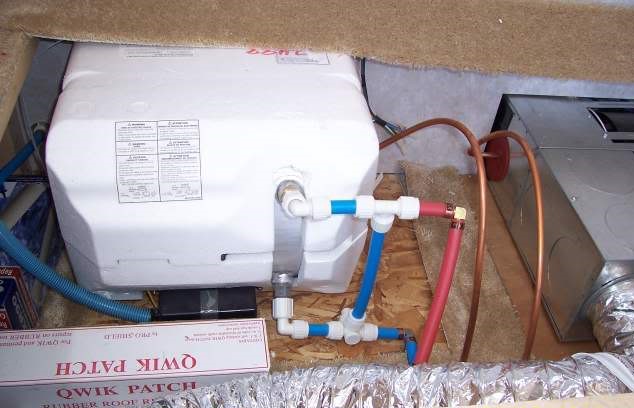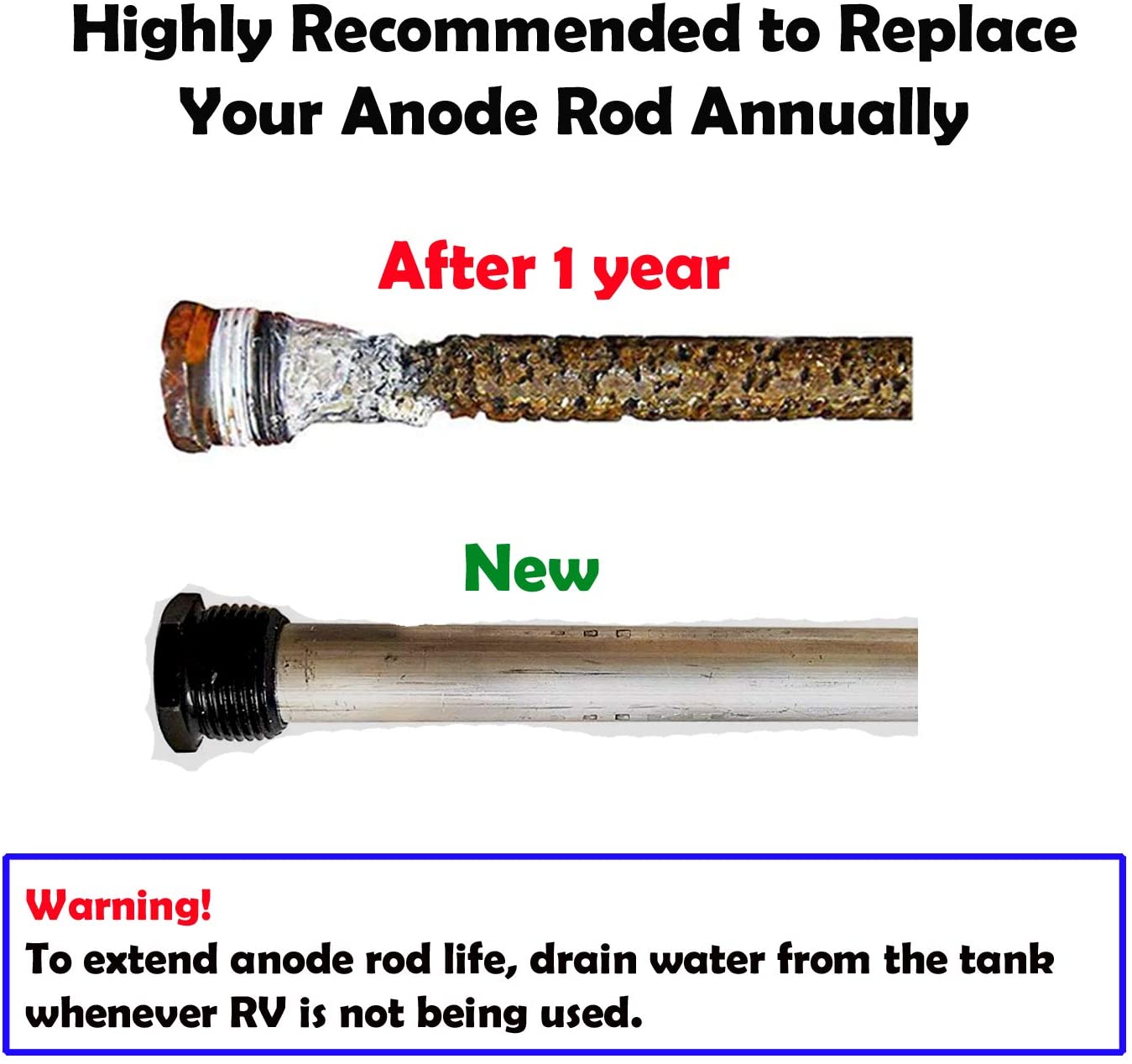
Essential Maintenance Tips for RV Hot Water Heaters
Of the many conveniences RVs provide, a hot shower tops many people’s lists. Having hot water for showering and dishwashing is a luxury we have come to enjoy. So, to ensure hot water is always there when you open the tap, make sure you service your RV hot water heater regularly.
Disclaimer: Your RV water heater uses electricity, gas, and produces hot water under pressure. Caution must be taken when performing this work. Servicing your RV water heater is an easy DIY task. However, if you are not comfortable with any of the potential risks, have a professional do this yearly service for you.
Suburban and Atwood are the two brands used in most RVs. Both brands are very similar and the service steps here apply to both. Some water heaters are gas-operated, however, others can operate on gas and/or electricity. Again, most service steps apply to both.
Let’s look at the steps to a thorough yearly water heater service.
Gas-fired RV hot water heater maintenance
Before you start servicing your gas-fired RV hot water heater:
- Shut off the electricity, gas, and water supply for the water heater.
- Drain any hot water in the lines and tank by opening a faucet in the RV.
Visual inspections
Here is a checklist of visual inspections:
- Inside your RV is generally where the hot water tank will be located. Access the tank and look for any leaks at any of the water line fittings.
- Outside your RV at the water heater access panel, check that all electrical connections are secure and free of any rust or build-up of any kind.
- Check inside the burner tube and chamber for debris. Blow out both with compressed air if available. Consider using a can of compressed air for this task.
- Check that the orifice on the end of the gas valve is open. If not visible, the bracket on the burner tube can be removed.
- Inspect the ignitor at the opening to the burner chamber. The tips should be in good condition and there should be no cracks on the ceramic section.
- Check the pressure relief valve to see if it’s leaking.
Water tank drain and flush
Here is how to drain and flush your RV hot water heater:
- Standing to the side and wearing gloves, open the pressure relief valve. There may still be some hot water and built-up pressure in the tank.
- Remove the drain plug, again being careful of possible hot water. On Suburban units, there will be an anode rod attached to the plug. Atwood units do not have this anode rod.
- Inspect the anode rod for pitting. The pitting is normal to the wear of the anode rod and is also the indication of when it needs to be replaced. This is a cheap part and most people replace it every year.

Using a flush wand attached to a garden hose, insert it into the drain plug opening and flush out the tank repeatedly. Look for any rust scale or large mineral deposits coming out of the tank.
If you don’t have a flush wand, you can use a second method. With the pressure relief valve closed and the drain plug removed, turn on the water supply and allow water to flow through the tank and out the drain until it runs clean.
Water heater fill and check
Here is how to fill and check your RV hot water heater:
- Reinstall the drain plug/anode rod, using thread seal tape on the threads.
- With the pressure relief valve in the open position, turn the water supply back on, allowing the tank to fill until the water starts to come out of the pressure relief valve.
- Turn the water supply off and allow the water to drain until there is little or no water leaking from the pressure relief valve. This will ensure you have the expansion space required at the top of the tank.
- Snap the pressure relief valve closed and check the valve and drain plug for leaks.
- Turn your water, power, and gas supplies back on and fire the water heater.
- Check for a strong blue flame in the burner chamber.

Electric RV hot water heater maintenance
The main difference with electric water heaters is they will have an electric heating element inside the tank. In addition to the above steps, the following should be considered for electric water heaters:
- Inspect thermostat covers for cracks or loose screws or any ways of water possibly entering.
- Remove the heating element and look for rust, holes, or scale build-up.
- Clean the tank and element using vinegar as seen in the video below. This can also be done with non-electric water heaters if you feel the inside of the tank needs a deeper clean after flushing with water.
A hot shower is a great way to start or end your day. Servicing your RV hot water heater is important to make sure you not only have hot water when you need it, but it can also save you costly repairs.
Make sure you keep track of all your RV maintenance with an online tool such as RV LIFE Maintenance . It will also send you timely reminders when RV maintenance is due to help you avoid expensive repairs and potentially serious accidents.
Continue reading for more information on RV water heaters:
Share your tips and suggestions on RV water heater service in the comments below, on our Facebook page, or share them with the RV community on iRV2 Forums.



